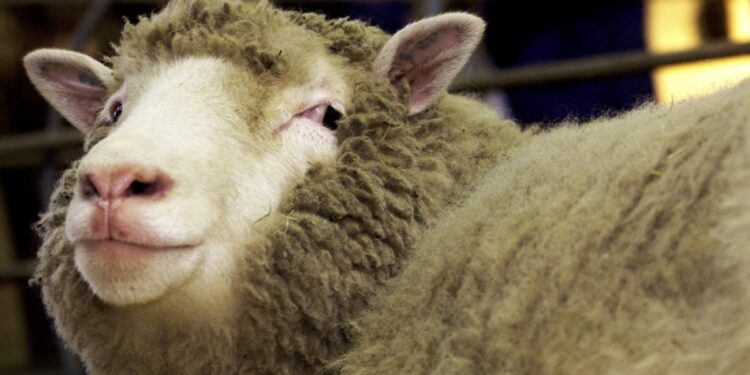Dolly the sheep made history as the first mammal cloned from an adult somatic cell. Created at the Roslin Institute in Scotland, Dolly’s birth in 1996 was a landmark achievement in biotechnology, revolutionizing our understanding of cloning and genetic engineering.
The Cloning Process
Dolly was cloned using a technique called somatic cell nuclear transfer (SCNT). Scientists took a nucleus from a mammary gland cell of a six-year-old Finn-Dorset ewe and inserted it into an enucleated egg (an egg cell with its nucleus removed). The reconstructed egg was stimulated with an electric pulse to initiate cell division and then implanted into a surrogate mother. After 277 attempts, Dolly was born on July 5, 1996, proving that genetic material from an adult cell could be reprogrammed to develop into a new organism.
Scientific and Ethical Implications
Dolly’s successful cloning confirmed that differentiated cells could be reprogrammed, challenging long-held beliefs in developmental biology. This breakthrough had profound implications for medicine, agriculture, and genetics. It opened the door to potential advancements such as therapeutic cloning, where cells from patients could be cloned to create tissues and organs for transplantation, reducing rejection risks.
However, Dolly’s birth also ignited intense ethical debates. Critics feared the possibility of human cloning, raising concerns about identity, individuality, and moral considerations. Some questioned the welfare of cloned animals, as cloning often led to high failure rates, genetic defects, and premature ageing. In fact, Dolly herself developed arthritis and lung disease, leading to her euthanasia at the age of six—about half the typical lifespan of a sheep.
Dolly’s Legacy
Despite her early death, Dolly’s impact on science remains significant. Her cloning paved the way for advancements in regenerative medicine, stem cell research, and genetic conservation. Scientists have since cloned other animals, including cows, pigs, and even endangered species, showing that cloning could play a role in biodiversity conservation.
Today, while cloning remains a controversial topic, its potential in medicine and agriculture continues to be explored. Dolly’s legacy stands as a testament to scientific ingenuity, marking a pivotal moment in biotechnology and genetic research. Her story remains a symbol of both the possibilities and challenges of cloning, shaping the ethical discourse around genetic engineering for generations to come.
newshub



Recent Comments